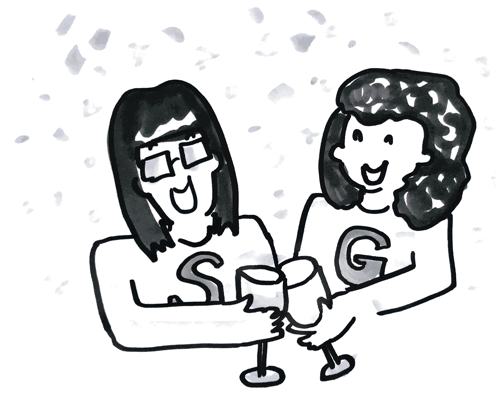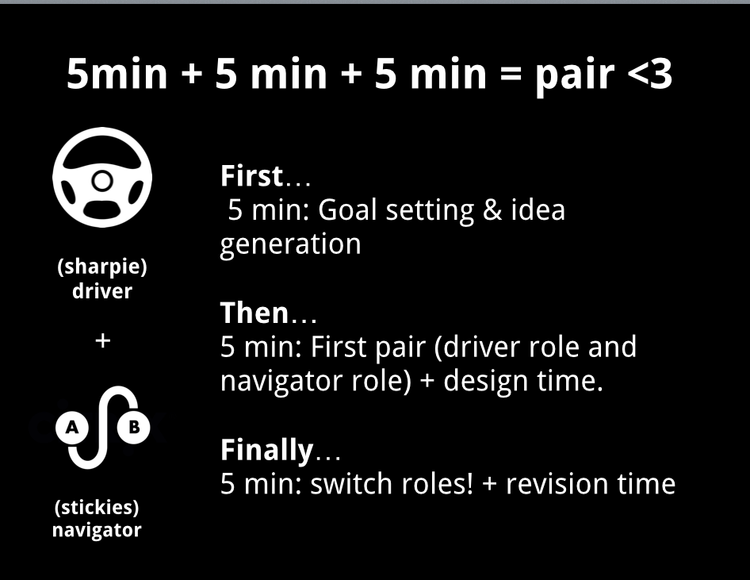Creating good design solutions for a complex problem can be difficult for any designer alone. But today, designers are used to working collaboratively in large groups. Some designers work in bigger cross-functional groups for purposes like brainstorming, user research and design critiques while others work in smaller ones for purposes like wireframing, prototyping and front-end development. However, working in groups of three or more does not necessarily always yield good design solutions.
In most group dynamics, there is always that one designated leader. Sometimes, it is arbitrary. Perhaps that person is the product manager or has a higher level of expertise or experience than anyone else in the group. Or maybe they just have a bigger voice, loudly stating their opinions with confidence and thus making them the group leader. This is only one of many more group dynamics that can cause friction between teammates. When there are competing thoughts on a team, collaboration can easily turn into a Hunger Games gauntlet, “until only one design (and one designer) emerges victorious” (Thompson, Cooper Blog ). All in all, this can disrupt the design narrative and lead to a less coherent end-product.
Working Together as One
Cooper, an interaction design agency headquartered in San Francisco, rediscovered the benefits to working in teams of two throughout the entire design process. In 1997, the agency created the concept of pair design. Pair design is a methodology in which a team of two designers work closely together to generate and validate design decisions in real time instead of retrospectively (Yao, Blog post, 2015). It comes from the idea that when two designers work closely in pairs, it can improve their creativity and workflow as well as establish collective ownership over the design process and the output.
Pair design is unique to collaboration because there is an emphasis on what Cooper calls thought partnership. The two designers are not merely working side-by-side giving feedback to one another. They work together so that each person has “shared ownership of what they’re creating, shared responsibility for making it great and shared risks and rewards if they succeed or fail” (Thompson, Cooper Blog). Thus, pair design is different from collaboration or feedback because each person in the pair has equal say and there’s a sense of shared ownership. And in this method, there are two distinct roles designers take on in order to help foster this co-creation and co-ownership of their work: the Generator and the Synthesizer.
Gen and Synth Team
In practice, each designer is assigned a role to work toward the design problem. One generates solutions and ideas as the generator or gen. The other designer synthesizes or analyzes the proposed solutions and ideas by identifying the strengths of the solutions and where it can be improved. They aim to connect these ideas to the overall problem and goals of the project. This role is called the synthesizer or synth.
The gen’s responsibility is to be creative. They usually use a whiteboard and one marker or pen and paper in hand to draw out and explain as many ideas they can think of. Meanwhile, the synth builds on those ideas. This role may not be the most creative, but it is equally important. Instead of jumping to criticism, the synth should “ask important questions, consider edge conditions and tie solutions back to the broader user or business context” (Yao, Blog post, 2015). They are the ones who get the ideas going and take on new forms to it by adding excitement. Synths guide the pair towards the best design solution.
Swap and swap again
Oftentimes, designers switch roles when they are stuck or have reached their limit. Swapping roles allows for each partner the opportunity to generate as well as evaluate. Changing roles also keeps the ideas rolling.
Perhaps Gen-Synth pair design is not a true yin-yang partnership since each person can switch between the roles of Generator and Synthesizer. But the main point of using this metaphor is the matter of balance—two people working together as whole through thought partnership. Just make sure that each designer sticks to their roles. Otherwise, the team will not get anywhere if both designers are generating or synthesizing at the same time.
Any Drawbacks?
The purpose of this methodology is to produce higher quality design, but it does have its drawbacks. One downside is that the practice thrives best when the pair is together in the same room—that way they can focus on the project at hand as a unit. That is not to say that pair design cannot be done remotely online. It is possible, but it does have its challenges. The pair of designers have to work harder to be sync and not have their attention divided when they are working together online.
Detailed Design and other Benefits
Pair design can be used throughout the entire design process. From brainstorming and user research to ideation/design and prototyping/evaluation. The particular roles of Gen and Synth become more distinct in the ideation phases. The method can even be used in design sprints like the one laid out in the Slide deck below (from Turning to Pair Design: How to Start designing together).
Gen-Synth pair design allows teams to generate and evaluate ideas robustly and quickly because it makes it easier for the pair to focus on the core problems. Therefore, pair design helps designers produce higher quality design and solutions.
If you want to see Gen-Synth pair design in action, here are some case studies you can look at:
- How to Get Unstuck with Gen Synth Pair Design
- Turning to Pair Design: How to Start designing together
- Pair Design
References
https://uxdesign.cc/how-to-get-unstuck-with-gen-synth-pair-design-2f1f04512a2e
https://uxdesign.cc/three-models-of-pair-design-f75e3b29a51a
https://www.oreilly.com/content/pair-design/

